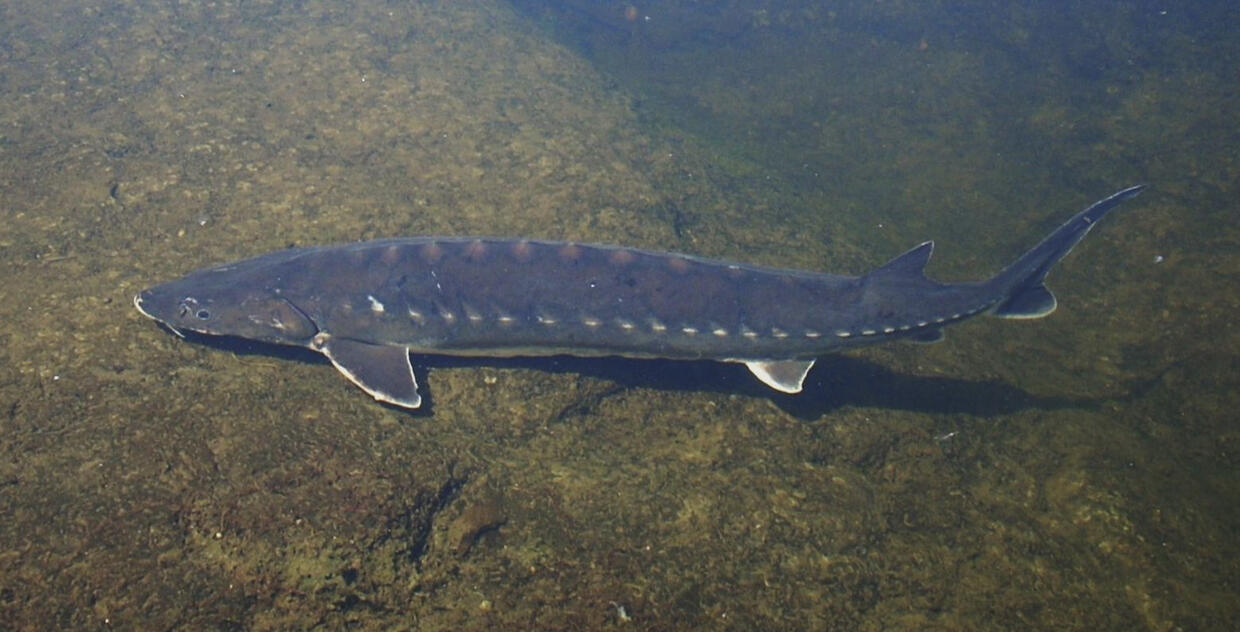MassWildlife’s Natural Heritage and Endangered Species Program conserves and protects the most vulnerable animal and plant species of Massachusetts and the habitats upon which they depend.
Image credit: Micah Kieffer, USGS
Description
Common name: Shortnose sturgeon
Scientific name: Acipenser brevirostrum
Size: Less than 40 inches
Range: Shortnose sturgeon are found in major rivers along the East Coast of North America from Florida to New Brunswick, Canada. In Massachusetts, shortnose sturgeon are currently found in the Connecticut and Merrimack Rivers with historical occurrences in many coastal rivers around Massachusetts.
MA Conservation status: Endangered
Federal conservation status: Endangered
Fun facts
- Although shortnose sturgeon are one of the largest fish species in Massachusetts inland waters, it is the smallest species of sturgeon in Massachusetts and one of smallest in the sturgeon family (Acipenseridae).
- Shortnose sturgeon vary in color from yellow-brown to black-olive on the dorsal surface and have a white belly. They lack scales, but have 5 rows of bony plates called scutes. The four barbels (fleshy whisker-like projections) that hang from their snout help shortnose sturgeon find invertebrates in the sediment.
- Shortnose sturgeon spawn in large freshwater rivers. They migrate from the mouths of rivers, traveling 10s to 100s of miles to reach suitable spawning upstream. During non-spawning periods sturgeon often leave freshwater in pursuit of food resources in estuaries or along the coast and migrate between large river systems.
- Shortnose sturgeon are relatively long-lived fish species. They can live up to 60 years, and do not reach reproductive maturity until they are 10–12 years old.
Threats and conservation
- The major threats to this species are river habitat degradation and loss caused by dams, channel dredging, poor water quality, contaminants, fisheries bycatch, and incidental boating strikes.
- Hydroelectric dams can be harmful in a number of ways. Dams can alter water flow and sediment patterns impacting spawning success, fragment populations by limiting fish movement, and cause mortality if fish swim too near intake pipes and pass through turbines. Efforts to restore sturgeon migration and reconnect subpopulations are underway in the Connecticut River through the construction of fishways to aid upstream and downstream movement.
- Due to its long life and late maturity, populations are likely slow to recover making shortnose sturgeon one of the most vulnerable freshwater fish species in Massachusetts.
How you can help
- Both shortnose sturgeon and Atlantic sturgeon are endangered species and sightings should be reported to MassWildlife. Click here for instructions on how to report.
- It is illegal to possess shortnose sturgeon. If you accidentally catch a sturgeon while fishing, release it as gently and quickly as possible, even if you need to cut the line. Never take the fish out of the water.
- MassWildlife's Natural Heritage and Endangered Species Program is responsible for the conservation and protection of over 400 rare animals and plants, including shortnose sturgeon. This work is primarily funded through grants and donations from supportive citizens. Support rare species conservation in Massachusetts—donate today!
